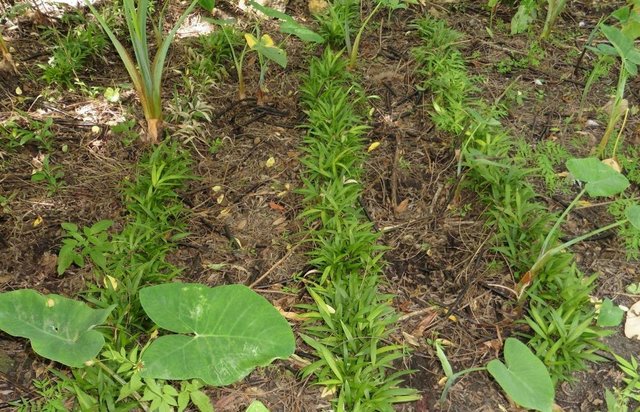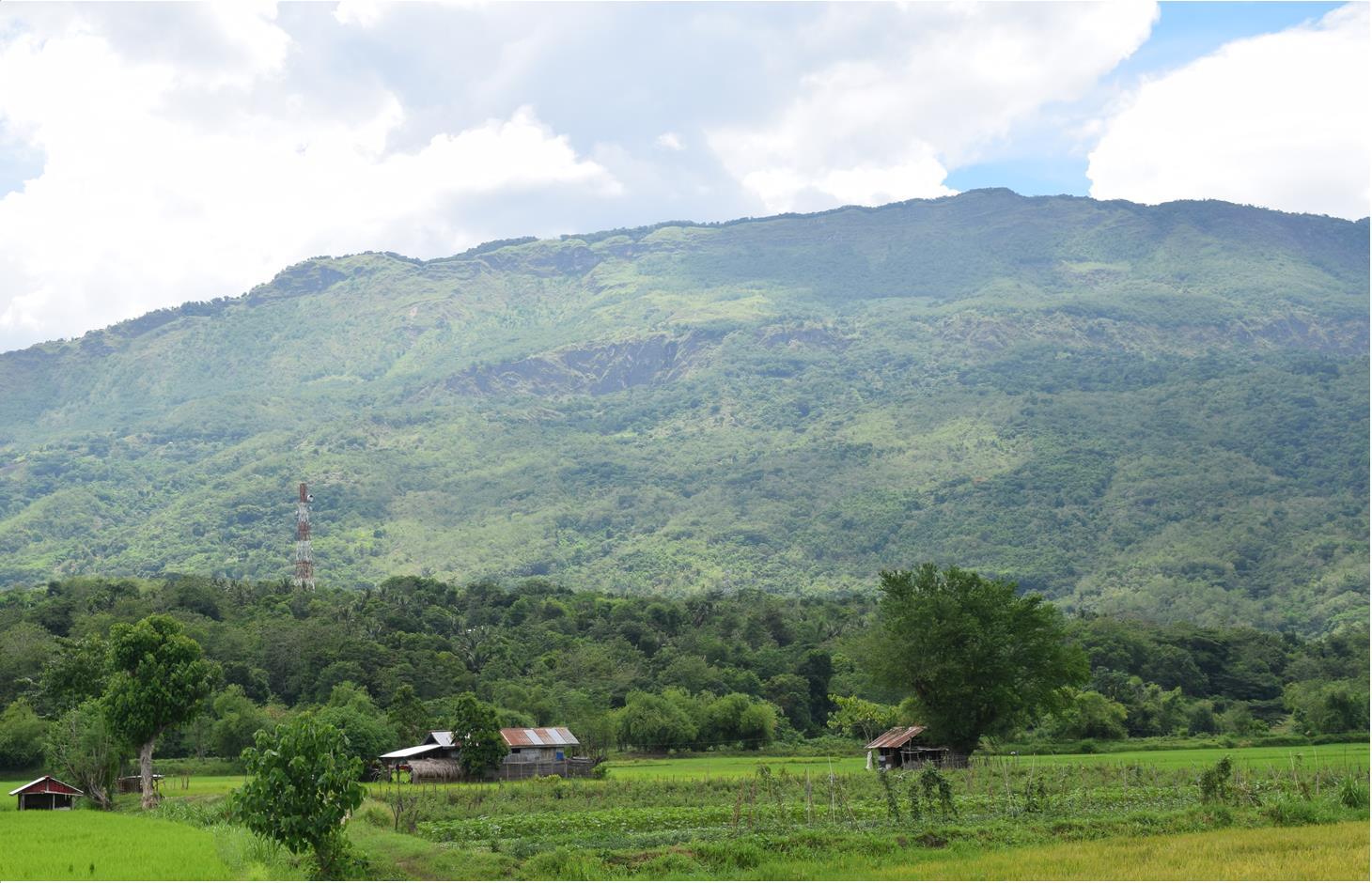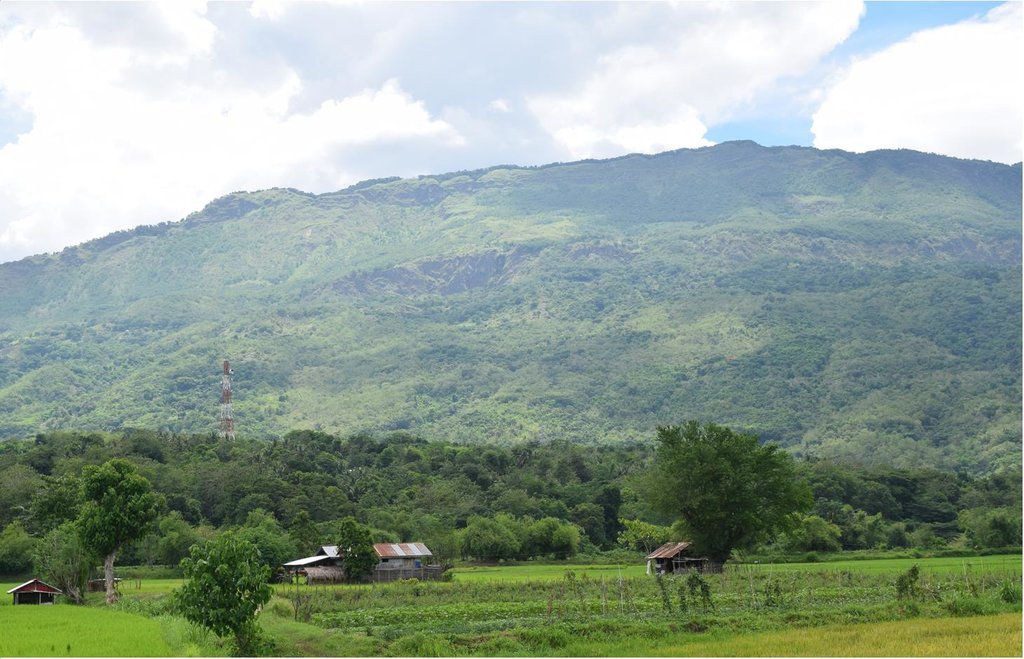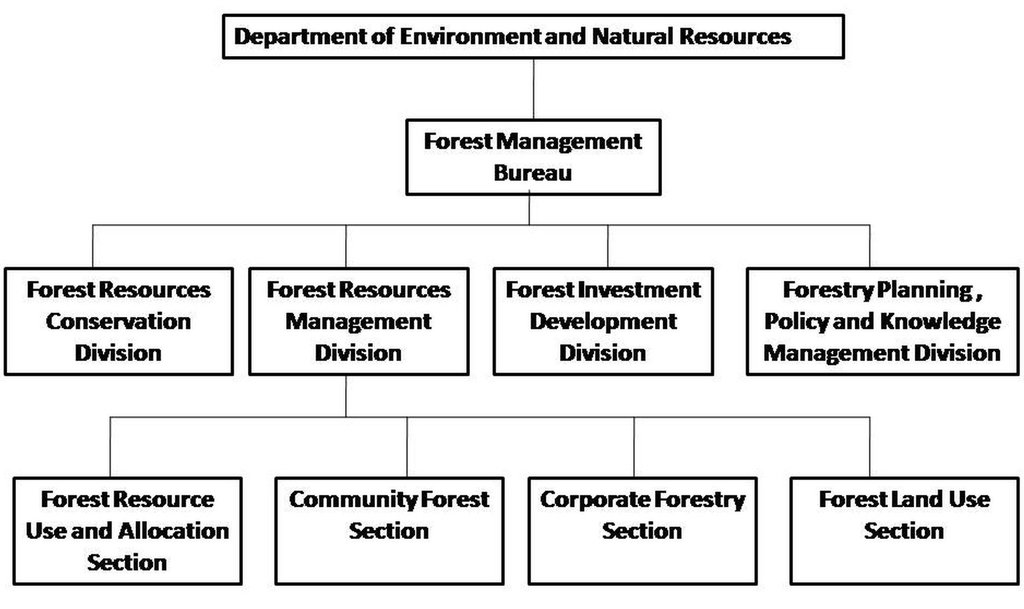Community-Based Forest Management [Filipinas]
- Creación:
- Actualización:
- Compilador: Isabelita Austria
- Editor: –
- Revisor: Deborah Niggli
Community Forestry, Social Forestry
approaches_1956 - Filipinas
Visualizar secciones
Expandir todo Colapsar todos1. Información general
1.2 Detalles de contacto de las personas de referencia e instituciones involucradas en la evaluación y la documentación del Enfoque
Especialista MST:
Dacumos Evangeline
Bureau of Soils and Water Management-Soil Conservation and Management Division
Filipinas
Especialista MST:
Dinamling Djolly Ma.
Bureau of Soils and Water Management-Soil Conservation and Management Division
Filipinas
Nombre del proyecto que facilitó la documentación/ evaluación del Enfoque (si fuera relevante)
Decision Support for Mainstreaming and Scaling out Sustainable Land Management (GEF-FAO / DS-SLM)Nombre de la(s) institución(es) que facilitaron la documentación/ evaluación del Enfoque si fuera relevante)
Department of Agriculture-Region VIII (DA-8) - Filipinas1.3 Condiciones referidas al uso de datos documentados mediante WOCAT
¿Cuándo se compilaron los datos (en el campo)?
21/07/2015
El compilador y la/s persona(s) de referencia claves aceptan las condiciones acerca del uso de los datos documentados mediante WOCAT :
Sí
1.4 Referencia/s al/los Cuestionario(s) de Tecnologías MST

Littuko Growing for Forest Enhancement [Filipinas]
Growing of rattan is done by upland farmers as part of the Community-Based Forest Management (CBFM).
- Compilador: Philippine Overview of Conservation Approaches and Technologies
2. Descripción del Enfoque MST
2.1 Breve descripción del Enfoque
Community-Based Forest Management (CBFM) refers to the organized efforts to work with communities in and near public forestlands with the intent to protect, rehabilitate, manage, conserve, and utilize the resources in partnership with the Local Government Units (LGUs) and other stakeholders.
2.2 Descripción detallada del Enfoque MST
Descripción detallada del Enfoque MST:
The objectives of the CBFM are the following: to develop, protect, conserve and utilize forest lands through sustainable forest management practices; to generate additional income for forest communities towards poverty reduction and hunger mitigation in the uplands; to promote equity through the provision of long term land tenure security and access to forest resources through issuance of CBFM agreements and certificate of stewardship; and to enhance the capacity of CBFM agreement holders as climate-resilient forest land resources managers.
The methods involved in the approach include agroforestry, plantation establishment, enrichment planting ,forest protection and conservation of existing forests. Agroforestry is the combination of forest trees, fruit trees and annual crops including livestock in the same piece of land. Plantation establishment is growing of forest trees in degraded grassland areas. Part of the enrichment planting is growing of rattan 'littuko', fruit trees, and indigenous species (dipterocarp,etc) along with existing trees in the area to improve forest cover and species diversification.
The project of CBFM in Nueva Vizcaya was initiated in 1998 and ended in 2002.The stages of implementation started with the preparatory stage, then the People's Organization formation and issuance of tenure instrument. It was followed by the planning stage, implementation stage then the monitoring, assessment and reporting stage.
The stakeholders in the approach are the Department of Environment and Natural Resources (DENR), Community or the People's Organization (PO), Local Government Unit (LGU), Non-government organizations, other government agencies, academe, private sector and donor institution. DENR provided the funding support in the implementation of CBFM, twenty five(25) years security of tenure renewable for another 25 years to qualified organization of forest occupant in the management of forestlands thru CBFM agreement, provision of technical assistance, formulation of guidelines, monitoring and evaluation. The POs serve as managers of the forestlands allocated to them through CBFM agreement. They are responsible in the development, protection, and maintenance of the area. The LGU provides support to communities in the implementation of CBFM within its jurisdiction.
2.3 Fotos del Enfoque
2.5 País/ región/ lugares donde el Enfoque fue aplicado
País:
Filipinas
Región/ Estado/ Provincia:
Bayombong
Map
×2.6 Fechas de inicio y conclusión del Enfoque
Indique año del inicio:
1998
Si no se conoce el año preciso, indique la fecha aproximada en la que se inició el Enfoque:
10-50 años atrás
Año de conclusión (si el Enfoque ya no se aplica):
2002
2.7 Tipo de Enfoque
- proyecto/ basado en un programa
2.8 Propósitos/ objetivos principales del Enfoque
The main objectives of the approach focused on the economic, social and environmental aspect to increase income and standard of living, to develop the capacity of the communities to sustain and manage the forestlands and resources, to promote social justice through security of tenure, use rights, and to reclaim or rehabilitate degraded lands and sustain its productivity.
2.9 Condiciones que facilitan o impiden la implementación de la/s Tecnología/s aplicadas bajo el Enfoque
normas y valores sociales/ culturales/ religiosos
- facilitan
The three farmers associations were organized into Federation of Vista Hills, Kalongkong and Kakilingan Upland Farmers, Inc., using CBFM as entry point.
disponibilidad/ acceso a recursos y servicios financieros
- facilitan
The International Tropical Timber Organization (ITT0) provided financial support for plantation establishment experiment and for developing the area through CBFM.
entorno institucional
- facilitan
The Buenavista Upland Development Advisory Council, with representatives from DENR, Community, DA, LGU, Academe, NCIP, and DPWH was organized to provide assistance in the implementation of CBFM in Buenavista, Bayombong, Nueva Vizcaya.
marco de trabajo legal (tenencia de tierra, derechos de uso de tierra y agua)
- facilitan
Through CBFM, the Federation of Vista Hills, Kalongkong and Kakilingan was awarded with CBFM Agreement to manage the area for 25 years, renewable for another 25 years .
conocimiento de MST, acceso a apoyo técnico
- facilitan
Through CBFM, training and technical support were provided by DENR and other service providers.
carga de trabajo, disponibilidad de mano de obra
- facilitan
It became holistic through the Federation under CBFM.
otros
- facilitan
Through people's participation, the Federation was able to reduce or control occurence of forest fires in the area.
3. Participación y roles de las partes interesadas involucradas
3.1 Partes interesadas involucradas en el Enfoque y sus roles
- usuarios locales de tierras/ comunidades locales
Communities living within and near forests dependent on the resources for livelihood including indigenous people
- especialistas MST/consejeros agrícolas
Department of Environment and Natural Resources
- investigadores
Nueva Vizcaya State University
3.2 Involucramiento de los usuarios locales de tierras/ comunidades locales en las distintas fases del Enfoque
| Involucramiento de los usuarios locales de tierras/ comunidades locales | Especifique quién se involucró y describa las actividades | |
|---|---|---|
| iniciación/ motivación | interactivo | Community Organizing Training, Orientation about CBFM, Community Mapping |
| planificación | interactivo | Agroforestry and Farm Planning, Planning and Management of Community Enterprise, Formulation and Preparation of Community Resources Management Framework (CRMF), Farm Planning and Agroforestry Development |
| implementación | interactivo | Livelihood training such as dressmaking, fossilized flower, agroforestry and soil and water conservation (SWC) technologies |
| monitoreo y evaluación | interactivo | Environmental Performance Monitoring, Project Development and Management, Project Accounting and Reporting System |
| research | interactivo |
3.3 Flujograma (si estuviera disponible)
Descripción:
Organizational structure of the Forest Management Bureau at the National Level Showing the location of the community forestry section where CBFM is the major concern (DENR-FMB)
Autor:
For. Isabelita V. Austria (DENR-Forest Management Bureau)
3.4 La toma de decisiones en la selección de Tecnología(s) MST
Especifique quién decidió la selección de las Tecnología/ Tecnologías a implementarse:
- principalmente usuarios de tierras con el apoyo de especialistas MST
Explique:
The land users have traditional farming practices which were enhanced through technical assistance and training provided to them by SLM specialist.
Especifique las bases que sustentaron la toma de decisiones:
- la experiencia personal y opiniones (no documentadas)
4. Apoyo técnico, fortalecimiento institucional y gestión del conocimiento
4.1 Construcción de capacidades / capacitación
¿Se proporcionó la capacitación a usuarios de tierras/ otras partes interesadas?
Sí
Especifique quién fue capacitado:
- usuarios de tierras
- personal de campo/ consejeros
Forma de capacitación:
- en el contexto de trabajo
- de agricultor a agricultor
- áreas de demostración
Forma de capacitación:
- workshops
4.2 Servicio de asesoría
¿Los usuarios de tierras tienen acceso a un servicio de asesoría?
Sí
Especifique si servicio proporcionado se realizó:
- en los campos de los usuarios de tierras
4.4 Monitoreo y evaluación
¿El monitoreo y la evaluación forman parte del Enfoque?
Sí
Si respondió que sí, ¿la documentación se utilizará para monitoreo y evaluación?
No
4.5 Investigación
¿La investigación formó parte del Enfoque?
Sí
Especifique los temas:
- economía/ marketing
- ecología
- tecnología
Proporcione detalles adicionales e indique quién hizo la investigación:
Done by the Nueva Vizcaya State University (NVSU) and the DENR-ITTO CBFM Project, Doctorate students from Nepal and Myanmar and Masteral students from DENR.
5. Financiamiento y apoyo material externo
5.1 Presupuesto anual para el componente MST del Enfoque
Si no se conoce el presupuesto anual preciso, indique el rango:
- 100,000-1,000,000
Comentarios (ej. fuentes principales de financiamiento/ donantes principales):
ITTO-Yokado Co., Japan; Government of Japan; USA; Australia and Republic of Korea -> together 100%
5.2 Apoyo financiero/material proporcionado a los usuarios de tierras
¿Los usuarios de tierras recibieron financiamiento/ apoyo material para implementar la Tecnología/ Tecnologías? :
Sí
Si respondió sí, especifique el tipo o los tipos de apoyo, condiciones y proveedor(es) :
Financial support during the initial stage of CBFM implementation
5.3 Subsidios para insumos específicos (incluyendo mano de obra)
- agrícola
| Especifique qué insumos se subsidiaron | En qué grado | Especifique los subsidios |
|---|---|---|
| seedlings | parcialmente financiado | |
Si la mano de obra de usuarios de tierras fue un insumo sustancial, ¿fue:
- voluntario?
5.4 Crédito
¿Se proporcionó crédito bajo el Enfoque para actividades MST?
No
5.5 Otros incentivos o instrumentos
¿Se usaron otros incentivos o instrumentos para promover la implementación de Tecnologías MST?
No
6. Análisis de impacto y comentarios de conclusión
6.1 Impactos del Enfoque
¿El Enfoque mejoró el conocimiento y capacidades de los usuarios para implementar MST?
- No
- Sí, un poco
- Sí, moderadamente
- Sí, mucho
Significant increase in forest cover through rehabilitation of grasslands to forest plantation. Enhanced natural regeneration through effective forest protection, enrichment planting of dipterocarp species,rattan, and multi-storey agroforestry development.
¿El Enfoque empoderó a grupos en desventaja social y económica?
- No
- Sí, un poco
- Sí, moderadamente
- Sí, mucho
They were made stewards of forestlands for 25 years,renewable for another 25 years. Also, they were granted use rights and more than 50% of the Peoples' Organization are with active registration and qualified to enter into livelihood development contract with the DENR thru National Greening Program(NGP) and CBFM-CARP.
¿El Enfoque mejoró cuestiones de tenencia de tierra/ derechos de usuarios que obstaculizaron la implementación de la Tecnologías MST?
- No
- Sí, un poco
- Sí, moderadamente
- Sí, mucho
The security of tenure (CBFM Agreement) provides long-term (50 years) stewardship and resource use rights based on approved strategic plan.
¿El Enfoque llevó a oportunidades de empleo, ingresos?
- No
- Sí, un poco
- Sí, moderadamente
- Sí, mucho
According to the study conducted by the DENR-Ecosystems Research and Development Bureau (ERDB), an increase in income of CBFM beneficiaries was realized.
Did other land users / projects adopt the Approach?
- No
- Sí, un poco
- Sí, moderadamente
- Sí, mucho
There are 1,884 communities implementing the CBFM approach nationwide. In the case of Brgy. Buenavista, its neighboring barangay Busilac have started to adopt the CBFM approach.
Did the Approach help to alleviate poverty?
- No
- Sí, un poco
- Sí, moderadamente
- Sí, mucho
Through income derived from wood, agroforestry products, employment or job generation.
6.2 Motivación principal del usuario de la tierra para implementar MST
- producción incrementada
- incremento de la renta(bilidad), proporción mejorada de costo-beneficio
- conciencia medioambiental
- costumbres y creencias, moral
- community organizing and development
6.3 Sostenibilidad de las actividades del Enfoque
¿Pueden los usuarios de tierras sostener lo que se implementó mediante el Enfoque (sin apoyo externo)?
- sí
Si respondió que sí, describa cómo:
The CBFM project at Barangay Buenavista, Bayombong, Nueva Vizcaya had financial support from the International Tropical Timber Organization (ITTO) and the DENR from 1998-2002.It was then turned-over to the Federation of Vista Hills, Kalongkong, and Kakilingan. Thereafter, the CBFM area has improved significantly in terms of forest cover, biodiversity and organizational capacity.The Federation is the manager of the forestland and its resources with the LGU and DENR providing monitoring technical support; minimal and limited financial assistance through the NGP and CBFM-CARP.
6.4 Fortalezas/ ventajas del Enfoque
| Fuerzas/ ventajas/ oportunidades desde la perspectiva del usuario de la tierra |
|---|
| Multi-benefits from multi-storey and agroforestry practices. |
| Indigenous Knowledge Systems and Practices (IKSP) of upland communities including indigenous people. |
| Fuerzas/ ventajas/ oportunidades desde la perspectiva del compilador o de otra persona de referencia clave |
|---|
| Secured tenure |
6.5 Debilidades/ desventajas del Enfoque y formas de sobreponerse a ellos
| Debilidades/ desventajas/ riesgos desde la perspectiva del usuario de la tierra | ¿Cómo sobreponerse a ellas? |
|---|---|
| Limited market access for CBFM products. | Develop market information systems to improve bargaining power of communities. Encourage value adding and primary processing. |
| Debilidades/ desventajas/ riesgos desde la perspectiva del compilador o de otra persona de referencia clave | ¿Cómo sobreponerse a ellas? |
|---|---|
| Poor financial management, record keeping by the POs, and members. | Enhance training of CBFM farmers in simple accounting,record keeping, and auditing. |
7. Referencias y vínculos
7.1 Métodos/ fuentes de información
- visitas de campo, encuestas de campo
- entrevistas con usuarios de tierras
Vínculos y módulos
Expandir todo Colapsar todosVínculos

Littuko Growing for Forest Enhancement [Filipinas]
Growing of rattan is done by upland farmers as part of the Community-Based Forest Management (CBFM).
- Compilador: Philippine Overview of Conservation Approaches and Technologies
Módulos
No se hallaron módulos





